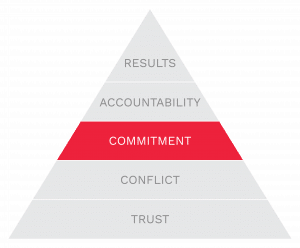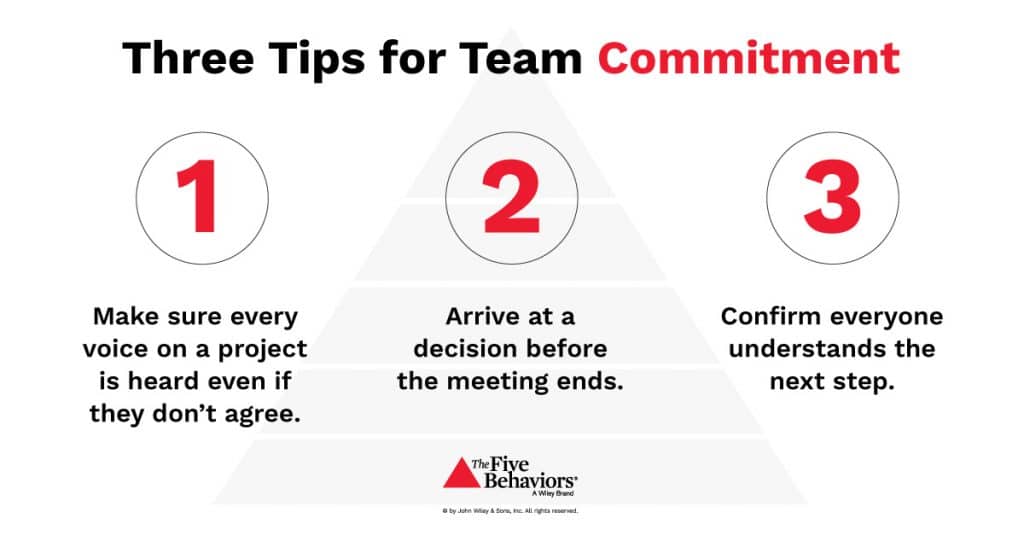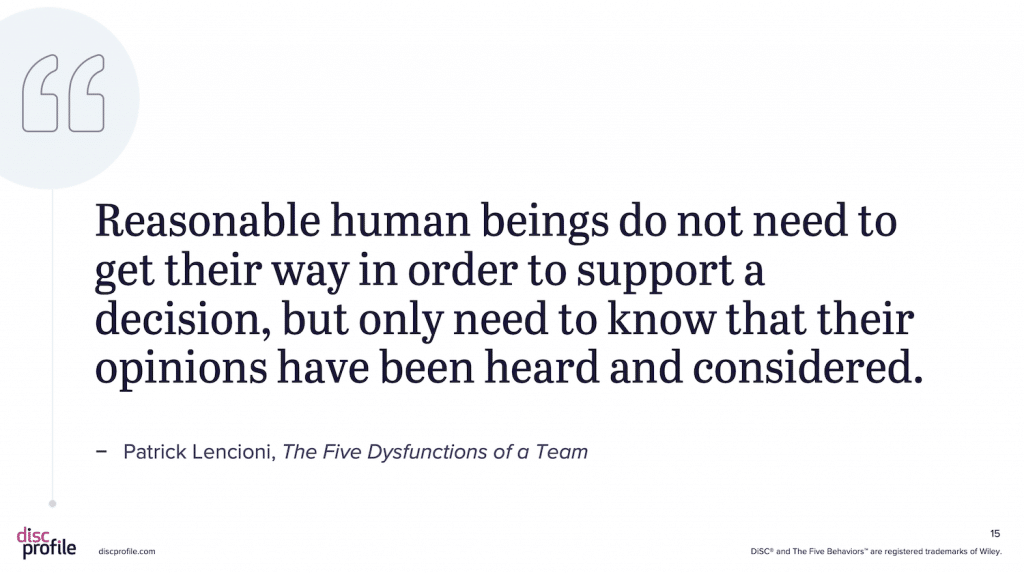We grow up hearing, “Be a team player.” We enter the job market, and employers say they value teamwork. If you played sports or joined clubs, you likely picked up great experience being part of a team. But how does that translate to your average workday?
It’s rare that teamwork skills are broken down and taught in an intentional way. That’s too bad, because it creates a critical teamwork skill gap in the workforce. The “gap” part means that both of these are true:
Ninety-nine percent of people think they’re good team members.
Fifty percent say bad team members are their #1 source of stress at work.
Some teamwork improvements need to happen at the team level. But there are always opportunities for individuals to practice being better teammates. If you work on more than one team—most people do—teamwork skills can travel with you, upping the value you bring to every group.
This article is the third in a series on how individuals can build teamwork skills. (See the first article on trust and the second article on conflict.) If you’re on a difficult team and you’re not the manager, it can feel like there’s nothing you can do about the dysfunction. Honing your skills allows you to focus on what you can control: your own actions.
What does “commitment” mean in the Five Behaviors model?
The Five Behaviors® Personal Development defines commitment as “clarity around decisions and moving forward with complete buy-in from every member of the team, even those who initially disagreed with the decision.”
Clarity does not mean certainty, something rarely possible in a complex world. The plan may change as circumstances change, but at each step, people must know the goal and their role in it.
Buy-in does not mean consensus. Not everyone will agree with every decision—that’s normal. Effective teams cannot delay their work in hopes of achieving consensus first.
How does commitment connect to trust and conflict?
The Five Behaviors model uses a pyramid to illustrate that each behavior of a cohesive team requires the foundation of the one below it. Commitment is built upon trust and healthy conflict.

Without trust, teams cannot engage in productive conflict around ideas, so not everyone feels heard. If someone got steamrolled or ignored while their team was making a decision, it’s often hard for them to support the decision one hundred percent. But when team members all have the opportunity to share and debate their ideas, everyone is more likely to commit to the decision reached, even if it wasn’t the one they proposed.
Patrick Lencioni, creator of the Five Behaviors model, said it best: “If people don’t weigh in, they can’t buy in.”
Why is commitment hard?
We said this above, but it’s important enough to repeat: The two greatest causes of a lack of commitment are the desire for consensus and the need for certainty.
You can tell your team hasn’t achieved commitment if you keep revisiting the same discussions and second-guessing decisions. This often happens when teams are looking for consensus rather than commitment. It’s rare that everyone on a team will agree on something, yet we still must move forward. We do this by engaging in healthy debate to arrive at a clear decision. More Lencioni wisdom: “A decision is better than no decision.”
You can tell an individual hasn’t committed if they exhibit behaviors like these:
- Dragging their feet
- Putting other work ahead of this project
- Doing the bare minimum
- Continuing to advocate for their view
- “Going rogue” and doing it their own way
- Showing agreement in meetings then complaining in private
- Jumping on a new opportunity that takes the project in a different direction, rather than sticking to the agreement
How individuals stand in the way of commitment
Do any of these sound like things you sometimes do?
Barriers to clarity
- You want to dive right in, so you don’t wait to make sure everyone is clear on next steps.
- You don’t want to “waste time” with a long discussion.
- You prefer to go with the flow and forget that others need more details and planning.
- You project what you want to hear onto the team’s decision rather than listening carefully.
- You don’t want to “bother people” when you don’t understand.
- You assume you’re the only one who is confused, so you try to figure things out on your own.
Barriers to buy-in
- You have a hard time moving forward when you know not everyone agrees.
- You take a lack of consensus to mean the decision is more fluid so you don’t have to stick to it.
- You can’t let go of your vision. Maybe you even keep trying to bring others around because you still think your way is best.
- You didn’t speak up during the decision-making process and now feel resentful for not being heard.
- Your attitude is: “Fine. You do it your way, I’ll do it mine.”
How to get better at commitment
Teams that commit end discussions with clear and specific resolutions and calls to action. They know everyone had their voice heard and will support the decision, even if they initially disagreed. How can you, as an individual, help foster this kind of environment in team settings?
Good news: You already have natural strengths you bring to your teams. For example, people with C DiSC styles can often help the team break down the details needed for clarity. i-style folks are usually good at speaking up with their opinions, helping with buy-in. Start by understanding and fostering your teamwork strengths. The Five Behaviors Personal Development is our recommended tool for doing so. This assessment uses Lencioni’s model to help individuals develop team skills.
The commitment skills you need more practice with will vary depending on your experiences and personality type. Here are some general pointers.
Express and stand firm in your opinions
If you don’t speak your mind, things will still move forward. You, though, will be fixated on your unspoken ideas rather than helping your team. You may be more soft-spoken than others, but your idea deserves equal consideration. If you advocate for your point of view and the team goes another direction, you’ll know that you gave it your best shot. Then you can get behind the team goal instead of being distracted by thoughts of how it might have gone differently had you spoken up.
Help others share their opinions
Everyone needs to weigh in for a team to achieve commitment. When someone is quiet during a debate, see if you can draw them out and get their input. Even if you are not the team leader, brainstorm ways you can make space for everyone’s views and foster an environment in which people feel comfortable speaking up.
Be willing to call out problems
Air your concerns before the team makes its decision. It’s almost always best to address problems sooner rather than later. And if teams know that ideas have been thoroughly vetted—instead of potential problems ignored—they will have a stronger commitment to the goal.
This also holds true after a team has committed. Buy-in doesn’t mean you stop thinking critically. You may hesitate to raise an issue because you don’t want to disrupt progress or appear uncommitted. But it’s better to talk about it right away and make sure you’re all still on the right track.
Confirm your understanding
As a meeting ends, is it clear to everyone what happens next and who is responsible? If not, speak up and ask for specifics. A quick “Here’s what I heard as far as next steps. Was this what you all heard, too?” can save everyone a lot of trouble. If you’re confused, you’re probably not the only one. (And even if you are the only one, you still deserve clarity.)
Overcommunicate
Likewise, don’t assume that other people will speak up if things are unclear to them. A team can make a mess quickly if everyone is trying to figure things out on their own. It’s hard to have too much clarity around a group decision; it’s very easy to have too little.
Learn to let go if your idea doesn’t “win”
What if, instead of always having your idea in the back of your mind while working half-heartedly toward another, you committed to the team? You spoke your piece, the team decided on something else, and now it’s your task to give all you can to make that idea successful. This change in mindset is easier if you expand your definition of “winning” beyond the individual. Winning in the context of a team means the group is moving forward in the best way, even if it’s not doing so exactly how you proposed.
So, check your negative energy. People can tell when you’re doing something begrudgingly, and it drags down morale. Even if you’re disappointed, don’t undermine with back-channel complaints what the team is trying to do.
Increase your value on every team
Teamwork is complex because people are complex. But there are still concrete skills you can hone that will make you a better teammate. Choose a skill from this article you’d like to improve, then write down specific things you’ll do this week, this month, and this quarter to practice it. Better yet, take The Five Behaviors Personal Development assessment, and it will provide you with a personalized road map for becoming a teamwork superstar.
In the next article, we look at how achieving commitment allows teammates to hold each other accountable.



